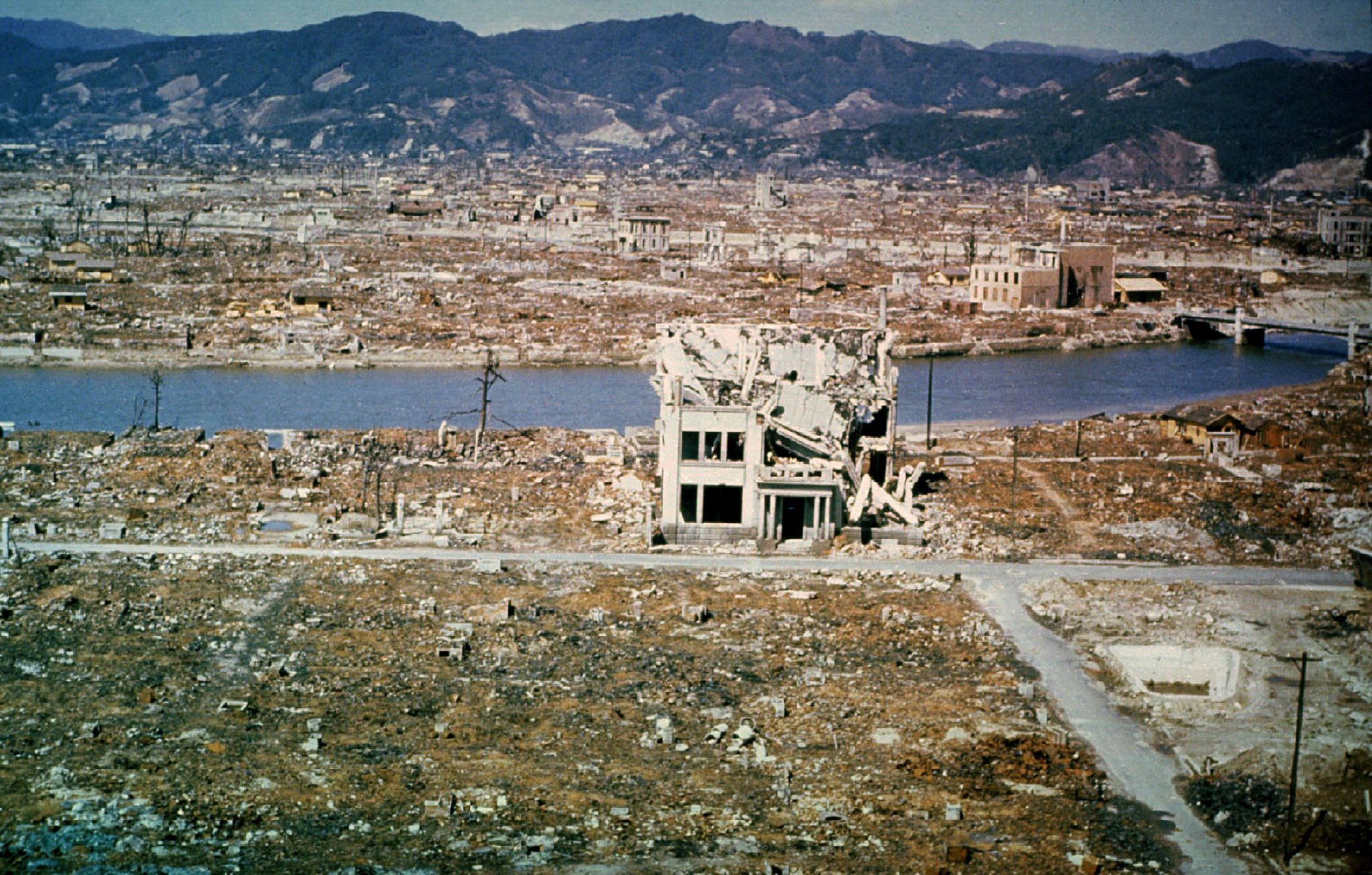
When Dr. Marcel Junod flew over the blasted remains of Hiroshima in an American plane in September 1945, he could not recognize what lay beneath him.
"The centre of the city was a sort of white patch, flattened and smooth like the palm of a hand. Nothing remained," he wrote. Junod, a delegate from the International Committee of the Red Cross (ICRC) newly arrived in Japan, could not identify the shapes of buildings, but he realized that the landscape of war had changed forever.
Junod's diaries end with a call for an outright ban on nuclear weapons. The Red Cross and Red Crescent Movement has made that call louder and louder as the survivors of Hiroshima and Nagasaki and their descendants have paid the long-term price of radiation sickness, and as the stark human, economic and environmental costs of the next nuclear weapons blast have become clearer.
It was hard for that call to be heard in the Cold War era of mutually assured destruction and the stockpiling of warheads deemed essential to national survival. Since 1989, public alarm at the prospect of atomic Armageddon has quietened, but the number of nuclear-armed states has increased, arsenals are being modernized, and powerful states remain convinced that a nuclear security umbrella is vital to national defense, domestic prestige and geopolitical clout.
We are in a new nuclear age, insecure and uncertain, with hair-trigger sensitivities and the constant risk of accidents. It's a time when the argument that nuclear weapons help keep global peace is ever more questionable.
It has always been clear that any use of nuclear weapons would have catastrophic humanitarian consequences. In recent years, research has given us further insight into the sheer scale of their impact, including their uncontrollable and long-term effects, undermining the supposition that the repercussions of a nuclear strike could be localized and contained.
Partly that's because today's weaponry is much more powerful than the bombs of 70 years ago. A contemporary missile-borne nuclear warhead is between 10 and 100 times more destructive than the "Little Boy" dropped from the Enola Gay on Hiroshima, which exploded with the force equivalent to 15,000 tons of TNT.
Modern climate-modeling techniques suggest that even a so-called "limited" regional nuclear war involving 100 Hiroshima-sized weapons would trigger global climate cooling that would cut food production for many years and put a billion people at risk of starvation. The environmental impacts of a large nuclear war would be even more acute.
We also have a much clearer understanding of the high risk of accidental detonation or the unintended use of nuclear weapons. From faulty computer chips, underwater submarine collisions and near-comic miscommunication, the world has come too close to a nuclear disaster too often for comfort.
We also know better how helpless we will be in the wake of a nuclear blast. In its vicinity, overwhelming numbers would need immediate treatment for life-threatening wounds. Yet medical facilities would be largely obliterated, and medical personnel would be dead or wounded. Who could offer comfort and care to the survivors?
Assessments by the ICRC have determined there is no feasible way to adequately assist a substantial portion of survivors in the immediate aftermath of a nuclear detonation. The U.N. Institute for Disarmament Research has reached a similar conclusion.
No state, international body or humanitarian organization has explained how it could mount an effective response while ensuring the safety of its personnel. First responders arriving from outside the immediate area would risk death or serious health problems from radiation exposure.
This month's annual review conference of the Nuclear Non-Proliferation Treaty (NPT) in New York should be a turning point in international efforts to rid us of nuclear weapons and their devastating effects. The NPT's Article 6 already commits nuclear-armed powers to nuclear disarmament.
States need to fulfill that commitment by agreeing to negotiate, within a defined time period and in a defined format, the prohibition of the use of nuclear weapons and their total elimination. A complete ban is the only guarantee nuclear weapons will never be used again.
Until the last nuclear weapon is eliminated, more must also be done to reduce the risk of a detonation. Nuclear-armed states should reduce the number of warheads on high alert and be clearer about the actions they are taking to prevent accidents.
Concrete steps are needed to reduce the role of nuclear weapons in military plans, doctrines and policies. These measures derive from long-standing political commitments and action plans agreed to at earlier NPT conferences and should be delivered as a matter of urgency.
Junod's account of Hiroshima opened with these words: "The physical impact of the bomb was beyond belief, beyond all apprehension, beyond imagination, its moral impact was appalling."
What would be written in the wake of the next Hiroshima? Who would be left to write it?
Peter Maurer is president of the International Committee of the Red Cross.
Uncommon Knowledge
Newsweek is committed to challenging conventional wisdom and finding connections in the search for common ground.
Newsweek is committed to challenging conventional wisdom and finding connections in the search for common ground.
About the writer
To read how Newsweek uses AI as a newsroom tool, Click here.








